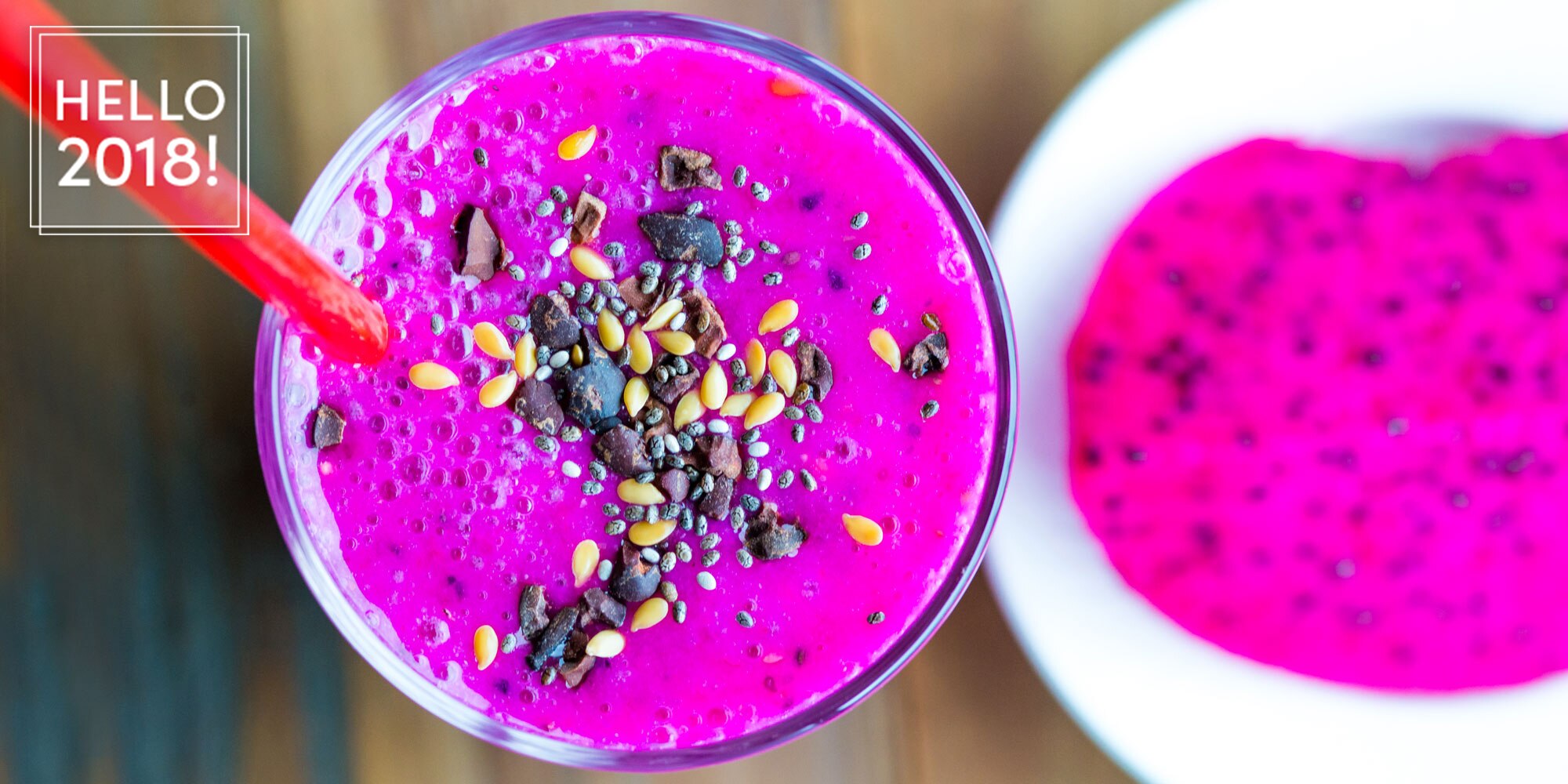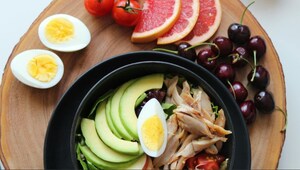9 Things Nutritionists Say You Should Eat Less in 2018
These foods are way overrated — including many that seem perfectly healthy.

[image id="adc41aac-b3e0-4a4d-9463-d194efdfd592" align="C" size="M" share="true" caption="" expand=""]
Although it's totally unnecessary to eliminate certain foods or entire food groups in the name of health, if you have grand aspirations to eat just a little bit healthier in 2018, registered dietitians recommend moderating your intake of these:
1. Diet Soda

Soda gets a bad rep for its high sugar content, but emerging science suggests diet soda made with artificial sweeteners is no better, since the stuff may be linked to a reduced sensitivity to sweets and lead togreater cravings for them, according to registered dietitian Maya Feller, who's based in Brooklyn, New York. "Drinking diet soda does not seem to encourage the majority of its drinkers to make healthier choices," she says, speaking to the increasingly irrefutable research.
2. Artificially-Colored Foods

Registered dietitian Frances Largeman-Roth, author of Eating in Color, says many of the colorful foods that went viral in 2017 contain artificial colors, such as FD&C Yellow No. 5, which can trigger itching and hives in some people, according to the Food and Drug Administration. "I want people to eat real food with natural colors, not artificial ones," she says, speaking to fresh fruits and vegetables that naturally represent the rainbow and deliver nutrients.
3. Veggie Chips

Newsflash: Most veggie chip bags still contain potatoes or other starchy root vegetables that are fried, making them no better for you than regular chips, according to registered dietitian Keri Glassman. She adds that store-bought kale chips are also overhyped when it comes to their health value: Certain varieties can contain superfluous ingredients that produce a snack with much more sodium and just as much saturated fat as conventional potato chips. "They're a great snack option, but you can save a whole lot of money and get even more nutritional value by following a super easy kale recipe at home," she says. (Or you could always go with plain old potato chips, which never disappoint.)
4. Acai Bowls

Although acai berries are rich in antioxidants that can protect against certain types of cell damage, according to the National Center for Complementary and Integrative Health, acai bowls are often made with sweeteners like agave and honey, plus sugar-packed toppings like granola and fruit, Glassman says. This amounts to a bowl of sugary food nearly devoid of healthy fats and protein, she says. Meaning: It won't satisfy you or keep you full for very long.
5. "Light" Ice Creams

Frozen desserts marketed as having more protein and less sugar than conventional frozen desserts need to go, according to Largeman-Roth. Although she says they're lower in sugar than conventional ice cream, they can be loaded with artificial sweeteners like erythritol — which, according to the Food and Drug Administration, can lead to bloating because they're difficult to fully digest. Largeman-Roth recommends eating a serving — i.e., a half cup — of real ice cream to satisfy your craving.
6. Protein-Enhanced Foods

Contrary to popular belief, adding protein to foods like pancake mix, cookies, and cereal doesn't make a food markedly healthier, says Glassman, becausethese enhanced foods aren't so different from their original counterparts. "Chances are you're [already] getting enough protein, so added protein might not be necessary," she says. "The 'protein' label can skew your vision of what the food actually is."
Mandy Enright, a registered dietitian based in Sea Girt, New Jersey, takes issue with protein shakes, too: "Depending on the ingredients included, these drinks can lead to excessive amounts of protein intake and decreased intake of high fiber-containing foods like whole grains, fruits, and vegetables," she says. "Protein shakes will not provide the same level of satiety as consuming a meal."
7. Seasonal Coffee Drinks

There's no question limited-edition lattes are delicious (and worth ordering if only for the A+ Instagram). However, Glassman warns against drinking these concoctions regularly, since they can be loaded with sugary syrups that can lead to an energy crash. To scratch your seasonal coffee itch without paying for it later, she recommends ordering an unsweetened latte flavored with cinnamon or pumpkin spice mix.
8. Pressed Juices

Drinking juice made from fruits and veggies may sound like a smart way to amp up your produce intake. But in fact, when pulp is removed from fresh ingredients during the juicing process, the juice loses much of its dietary fiber, according to Enright, who says for this reason, drinking juice is less filling and satisfying than eating its unadulterated components. Her other objection: OD-ing on natural sugars found in fruits and veggies, as you might do when following a juice cleanse, can cause stomach cramping and bloating in some people. (A 2017 review conducted by German-based researchers suggests consuming more than 50 grams of fructose can trigger adverse effects.)
9. Cauliflower Crust Pizza

Although swapping carb-heavy crust for a veggie-based alternative may make sense on paper — extra veggies FTW! — many packaged cauliflower crust pizzas are no healthier than whole-wheat pizza dough and may even contain less fiber, depending on the recipe, according to Largeman-Roth. That's because many cauliflower crusts contain ingredients besides cauliflower, like mozzarella cheese and different types of flour.So: Although cauliflower crust can be an acceptable option for people who are allergic to the gluten in regular pizza dough — or simply like the taste (YOLO!) — there's really no need to swap it in for pizza.
more from Beauty

The finest eateries across Mumbai, Goa, Hyderabad, Bengaluru, Delhi, and Pune

Sex tips to keep in mind during this Mercury Retrograde

What is intuitive eating and how is it different from other diets?

8 vanilla-infused beauty products for summer

#AllEyesOnB: Beauty launches on our radar this April

What the first trip with your partner says about your relationship

Signs that you’re a bad packer on your holidays and how to avoid them

Lessons that my string of unhealthy relationships taught me

Everything you need to know about the "Who is Your Chicago?" trend

Masoom Minawala pens down a quintessential guide for every woman who wants to prove the world wrong
